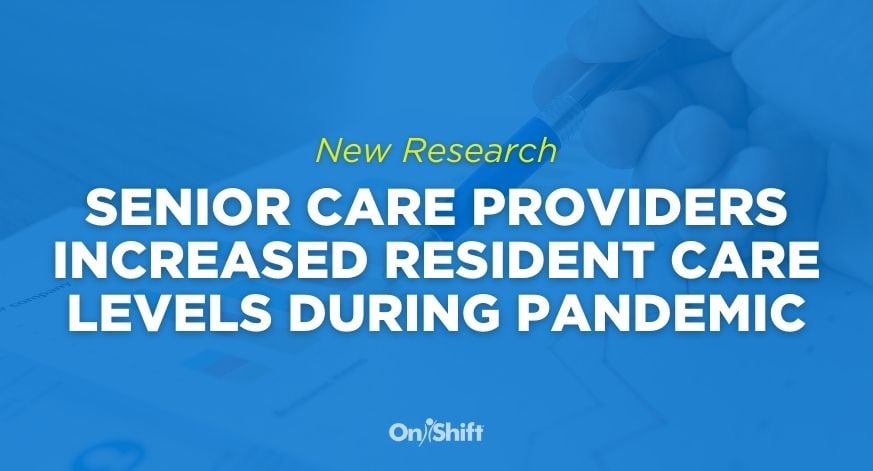
Still, you all have given the fight against COVID-19 everything you have. I know that, your peers know that and I think the rest of the world will gain a better understanding over time.
In fact, a recently published study is already helping to paint the industry in a better light. A Health Affairs report titled “Nursing Home Staffing Levels Did Not Change Significantly During COVID-19,” presents evidence that, when you take into consideration the decline in census, staffing ratios remained unchanged or increased throughout the pandemic. This conclusion came from an analysis of staffing hours during the first nine months of 2020 (compared with the same period in 2019) using auditable daily Payroll-Based Journal staffing data from the Centers for Medicare and Medicaid Services (CMS).
“We found that the total number of hours of direct care nursing declined in nursing homes during the COVID-19 pandemic, as did the average nursing home census. When we accounted for changes in census, the number of nurse staff hours per resident day remained steady or, if anything, increased slightly during the pandemic,” the authors said.
The report confirms that census began to decline in March of 2020 and, by the end of September 2020, had dropped an average of nine residents per nursing home or 10.5%.
Researchers also looked at the data compared to the previous year. While they found a small decrease in nurse staffing hours in 2019, the 2020 data showed staffing levels increased slightly between January and September 2020.
“This translates to an absolute increase of 5.7 minutes per resident day and a relative increase of 2.8 percent,” states the report. “The changes in staffing were small and similar in absolute terms across registered nurses, licensed practical nurses, and certified nurse assistants (ranging from a decrease of 0.5 minutes per resident day for certified nurse assistants to an increase of 3.2 minutes per resident day for licensed practical nurses).”
This shows that organizations were diligently staffing their communities to ensure residents received extra care during this difficult time. And they did so in the face of increased staff call-offs and resignations, while also willingly incurring extra labor costs on top of the high costs associated with PPE and other infection control measures. But, most importantly, this demonstrates that direct-care employees were going above and beyond to comfort their residents and keep them safe. “Staff members were putting themselves at risk providing intense and personal care to residents, often without adequate PPE [protective personal equipment] and while mourning the loss of residents they had known and cared for,” the report said.
The report’s authors highlight the industry’s need for more support, especially policies that improve the lives of nursing home staff. I couldn’t agree with that call to action more. The pandemic has clearly highlighted that our nation’s LTC and senior living communities need more resources, especially as a growing number of people move into these care settings.